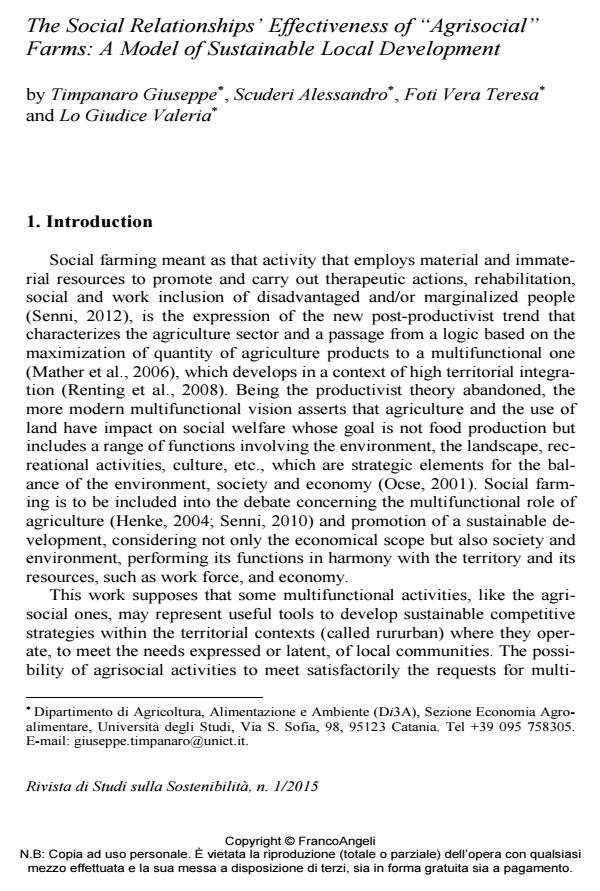The Social Relationships’ Effectiveness of "Agrisocial" Farms: A Model of Sustainable Local Development
Journal title RIVISTA DI STUDI SULLA SOSTENIBILITA'
Author/s Giuseppe Timpanaro, Alessandro Scuderi, Vera Teresa Foti, Valeria Lo Giudice
Publishing Year 2015 Issue 2015/1
Language English Pages 18 P. 99-116 File size 268 KB
DOI 10.3280/RISS2015-001007
DOI is like a bar code for intellectual property: to have more infomation
click here
Below, you can see the article first page
If you want to buy this article in PDF format, you can do it, following the instructions to buy download credits

FrancoAngeli is member of Publishers International Linking Association, Inc (PILA), a not-for-profit association which run the CrossRef service enabling links to and from online scholarly content.
In accordance with the multifunctional farms model, social farming activities are useful instruments to maintain sustainable competitive advantages in certain areas, as these made-to-order services are able to satisfy the needs declared and/or hidden of local communities. The authors claim that social farming activities can be a model of sustainable development for local communities through the construction of an effective relationships network that is able to involve the interested actors within the complex process of social services delivery. The Social Network Analysis has been used to measure the relationships created by the agrisocial farms belonging to a periurban area. The results show effectiveness of relationships network and an good level of cross sector collaboration among local actors. This relationships network is able to contributes also to local development.
Keywords: Multifunctionality, SNA, rururban area, integration, territory, welfare
- Urban agriculture as a tool for sustainable social recovery of metropolitan slum area in Italy: case Catania G. Timpanaro, V.T. Foti, A. Scuderi, S. Toscano, D. Romano, in Acta Horticulturae /2018 pp.315
DOI: 10.17660/ActaHortic.2018.1215.58
Giuseppe Timpanaro, Alessandro Scuderi, Vera Teresa Foti, Valeria Lo Giudice, The Social Relationships’ Effectiveness of "Agrisocial" Farms: A Model of Sustainable Local Development in "RIVISTA DI STUDI SULLA SOSTENIBILITA'" 1/2015, pp 99-116, DOI: 10.3280/RISS2015-001007